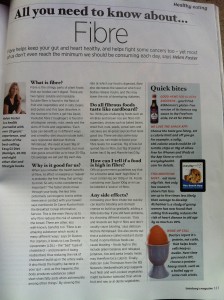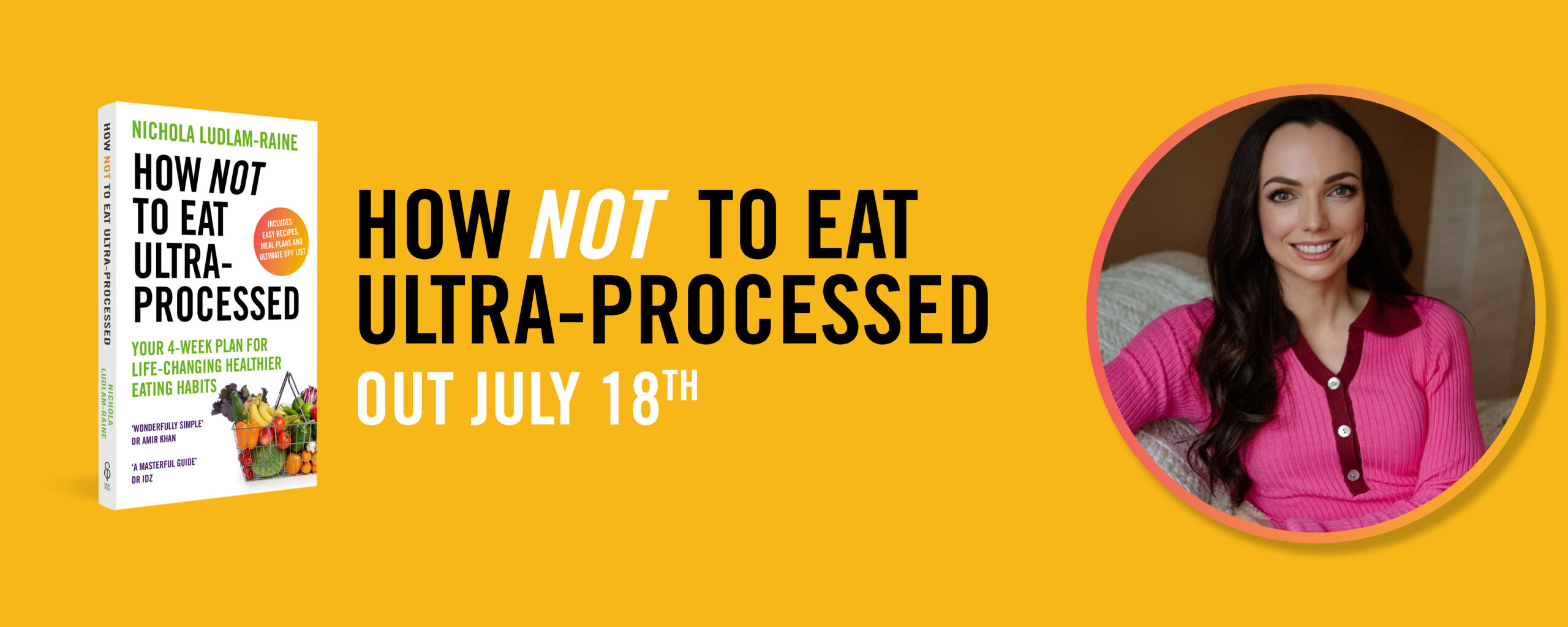
I was recently interviewed by Sainsbury’s Magazine (April 2012 edition page 117) for a piece entitled ‘All you need to know about.. Fibre’, and here it is in full!
- What’s the difference between soluble and insoluble fibre – and why should we care?
Fibre in the diet is extremely important! It is the un-digestible part of the food that we eat and is made up of two main types, soluble and insoluble. Soluble fibre, found in the fleshy part of fruit and vegetables, oats, beans and pulses, dissolves in the stomach to form a liquid/gel where as insoluble fibre, found in whole-grains, wholemeal flour and the edible skins of fruit and vegetables, doesn’t. We should take note of these different types of fibre as they can benefit us in different ways depending on our needs. A healthy person however should aim to have a mixture of the two.
- Why exactly is fibre good for us – we all know it is, but what exactly does it do?
In essence, fibre helps keep our digestive systems and bowels working! Soluble fibre helps to soften stools (making it easier to go to the toilet!), lower cholesterol levels and promote healthy gut bacteria. Insoluble fibre increases stool bulk and transit time, and therefore prevents constipation. Higher fibre foods are also good for us they tend to have a lower ‘glycaemic index’ which means they release their energy more slowly and keep you feeling fuller for longer. There is also evidence to show that diets rich in fibre can reduce risk of certain cancers such as colorectal.
- When people think high fibre, they think ‘cardboard’ – what are some of the surprising tasty fibre providing foods people can incorporate into their diet?
There are lots of different ways of increasing your fibre intake; all you have to do is make some simple swaps or little additions to your diet such as:
– Ensuring your breakfast cereal is ‘wholegrain’ – the chocolate varieties can count too!
– Choosing wholemeal bread (or the 50:50 or best of both varieties) for sandwiches
– Choosing wholemeal pasta/brown rice to accompany meals
– Adding a handful of dried fruit, nuts or seeds to breakfast cereals or yoghurts
– Adding pulses/lentils and extra vegetables (fresh, frozen or tinned) to soups, curries, stews and sauces
– Having an oat or dried fruit based cereal bar instead of biscuits as a mid-meal snack
– Swapping half of your white flour for wholemeal or oat flour (just blend some oats) in baking
- How can we tell if a food is high in fibre?
A food labelled as ‘high fibre’ must contain 6g of fibre per 100g/ml. Foods must contain over 3g per 100g/ml to be labelled as a ‘source’ of fibre.
- What are the mistakes people make when going high fibre that lead to problems and how can you rectify them?
In the UK it is recommended that we aim for 30g of fibre a day, but the average person currently only consumes around 18g. If you are looking to increase the amount of fibre in your diet you should always increase intake gradually, as well as increasing fluid intake at the same time. Fluid helps waste products to move through the digestive tract more easily and creates a softer stool, which makes it easier to pass. Going from no fibre to a lot of fibre could be a strain on your digestive system and cause discomfort.
- If you have a problem like irritable bowel syndrome (IBS) and know fibre disagrees with you, what, if anything, can you do to get the benefits without the bloat?
Fibre can be both a friend and foe. If you have been diagnosed with IBS and feel bloated with higher fibre foods then you may want to look at the types of fibre in your diet. Soluble fibre (oats, peeled fruit, and peeled vegetables) tends not to contribute to wind and bloating, where as insoluble fibre (whole-grains, fruit and vegetable skins) may increase it. Well-cooked vegetables may also be better tolerated than raw or al dente vegetables.


Hey Nic – Great article, wholemeal food stuffs are under valued by people at the moment. We use wholemeal pasta in all our dinners and wholegrain breads like Burgen’s Soya and Linseed.
Thanks Ben – your choices sound fantastic! Keep it up 🙂